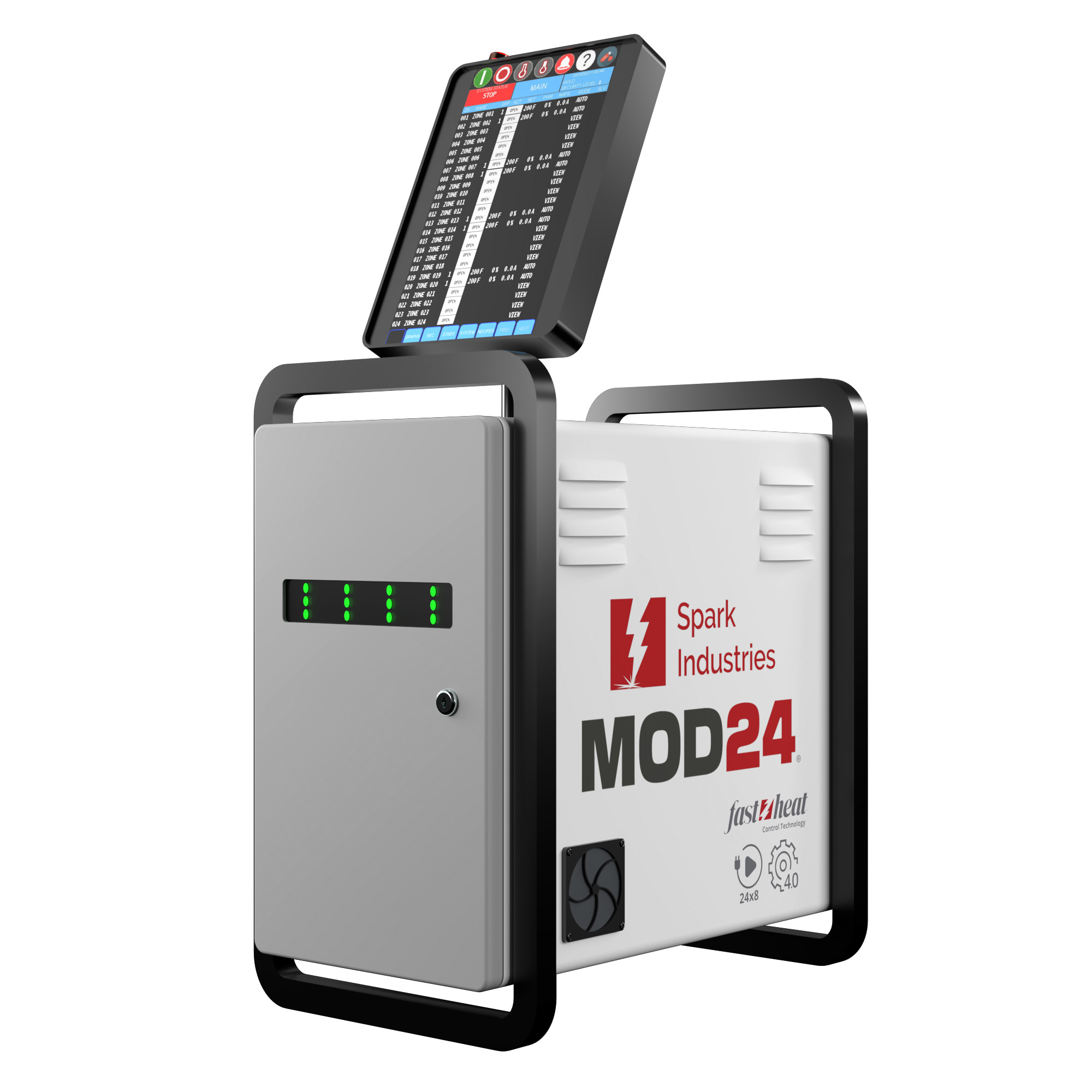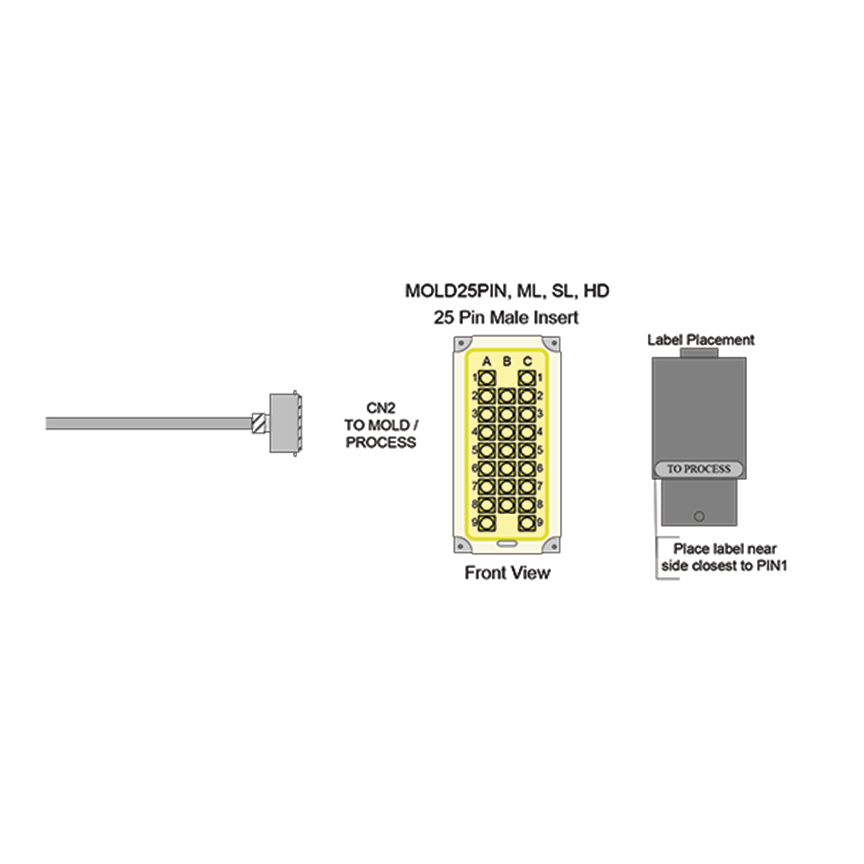Manny Diaz invented the Fast Heat CableXChecker® because of practical problems he experienced on service calls. It took too long and was too easy to make a mistake when checking for zone continuity and shorts (most people do not check for shorts) within hot runner cables. The CableXChecker® saves time (about 15 minutes per cable!) and ensures 100% accurate testing. Don’t know your wiring diagram? No problem; the CableXChecker® is customized to your connector standards and shows your wiring diagram on the device. Just connect to the matching connector and go.
The Problem with Hot Runner Cable Testing
“Everytime that I would go out to do a service call, all of the good cables were where? Yes, they were all on machines. Where were all of the bad cables? There inside of the tool room, maintenance right; somewhere where they were going to repair them.
I would get to a place where I was going to do some maintenance to a hot half or a controller, and what I ended up always doing was having to take that cable and actually put it between my legs, if I’m by myself, and take my meter (put it in audible mode because I can look at the meter and the connector at the same time) and then I would have to go from pin to pin, so one and one, thirteen and thirteen. And, I would have to know the wiring diagram and do that for all of the pins. Ok, on this zone I found a problem.
Don’t Forget To Look For A Short!
Now, what I did not do was look for a short. That’s mainly what we miss! To be able to find a short, this is what I have to do. I have to first make sure that I’m making a contact. Then I gotta touch every pin. Once I’m done doing every pin inside of the cable, now I can go to the second pin and do it again. Now I have to go to each one of the pins and the ground.”
“Now, if I had someone with me it wouldn’t be too bad because I’d give him one end, and I’d tell him pin #1, then pin #13, etc. I have to know the wiring diagram. I said, man there has got to be an easier way to do this, and that’s when we came up with the Cable Checker.”
Credit: This is a video and script of an actual MoldTrax Hot Runner Repair Training Course.
A Better Way to Test Hot Runner Cables
“I’m going to show you how easy it is to detect everything we just did, plus you don’t have to know the wiring diagram, because the wiring diagram is right on here. So if you have a 24-pin connector, it tells you 24-pin connector. If this had two connectors on it, it would have say a 25 pin and a 24 pin right on the label and the wiring diagram is right here – 1 and 13, 2 and 14 and so on and so forth. The wiring diagram is right here and I don’t have to even think about it.
So, I go ahead and I plug in my cable, plug in the other end, and with the rotary switch I can quickly tell that pin #1 is in the right place and pin #13 is in the right place; pin #2 is in the right place, pin #14 is in the right place, #3 is in the right place, #14 is in the right place, now here I have a short (3:48). See how hard it was for me to test for a short (the old way)? Now here, we quickly found it. That’s also a short; now a mis-wire, it should be on pin #5 but it’s actually on pin #21. I was quickly able to do that with just a couple turns of the knob.
Most of the time what is missed is going to be that short. If I do see a short inside of a cable, if the inserts are good, I will cut it here and cut it here and get this cable out of manufacturing. They cannot use it. I will pitch it.”
Why You Should Throw Hot Runner Cables Away if You Find a Short
“I did have a company that came to me and said, “You know what Manny, the problem is probably going to be here and here, it’s probably still a good cable so we shouldn’t throw it away.” What I told him was if you are right, I am going to make you a brand new cable for free. This is what I’m going to do. I am going to take your cable, and I’m going to split it all the way down. And, when I opened it up, I could see that there were melted wires here, melted wires here and melted wires here. So if you do get a short, there is a potential for melting the wires inside.
With the ohm meter, I will tell you that 90% of the time (that’s a lot right?), the guy that’s ohming out that cable is not looking for shorts. He’s just looking for it making a contact. And, guess what, it’s going to make a contact but it could also be making contact with another wire. That’s where the short is.”
A Better Way to Wire Hot Runner Cable Connectors
“If it’s a heater, all I have to do is put all of the wires in. Doesn’t matter where I put it. I don’t have to worry about what pin it’s in (on the controller side), the wiring diagram is right here. If I’m making a set of cables, all I have to do is grab (after wiring up the controller side) the wires and immediately I know I’m going to put that inside of zone number eight. Grab my other wire, and this is pin #19, and so-on and so-forth. I don’t have to even think about it, the wiring diagram is right here, that side is already wired (the controller side), so I can quickly wire up this side of the cable.”
If I don’t do it that way then I have to touch this side (the controller side), put it into a vice, and start touching all of the other wires
References:




